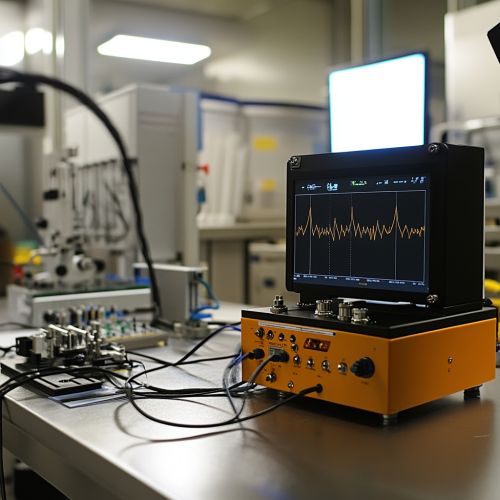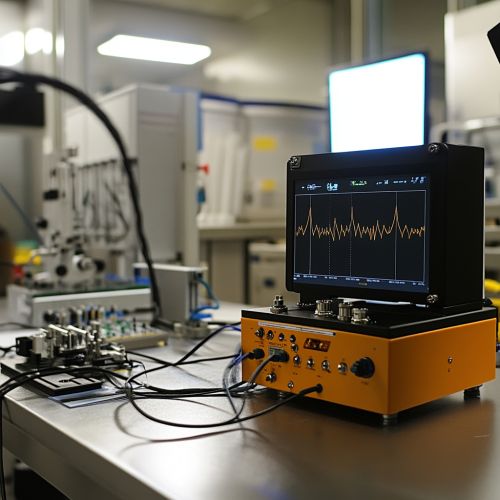High Resolution Dynamics Limb Sounder (HIRDLS)
Introduction
The High Resolution Dynamics Limb Sounder (HIRDLS) is an instrument designed to measure the distribution of temperature, ozone, water vapor, and other trace gases in the Earth's stratosphere and upper troposphere. HIRDLS was a joint project between NASA and the United Kingdom's Natural Environment Research Council (NERC) and was part of the Earth Observing System (EOS) on the Aura satellite, launched in 2004.
Instrument Design and Functionality
HIRDLS was designed to provide high vertical resolution measurements of atmospheric parameters. The instrument utilized a limb-sounding technique, where it observed the Earth's atmosphere at the horizon, or limb, rather than directly below the satellite. This method allowed for the detection of fine vertical structures in the atmosphere.
Optical System
The optical system of HIRDLS consisted of a telescope and a spectrometer. The telescope collected infrared radiation emitted by the Earth's atmosphere, which was then directed into the spectrometer. The spectrometer dispersed the radiation into its constituent wavelengths, allowing for the identification and quantification of various atmospheric gases.
Detectors and Calibration
HIRDLS employed a series of detectors sensitive to different infrared wavelengths. These detectors were cooled to cryogenic temperatures to reduce thermal noise and improve sensitivity. Calibration of the instrument was performed using onboard blackbody sources and observations of deep space, ensuring the accuracy of the measurements.


Scientific Objectives
The primary scientific objectives of HIRDLS were to improve our understanding of atmospheric dynamics, chemistry, and the interactions between different atmospheric layers. Key areas of focus included:
Stratospheric Ozone
HIRDLS provided detailed measurements of ozone distribution in the stratosphere. This data was crucial for studying the processes that control ozone depletion and recovery, particularly in the context of the Montreal Protocol.
Water Vapor and Trace Gases
The instrument measured the distribution of water vapor and other trace gases, such as methane and nitrous oxide. These measurements were essential for understanding the transport of these gases and their role in atmospheric chemistry and climate.
Temperature Profiles
HIRDLS offered high-resolution temperature profiles of the atmosphere, which were vital for studying atmospheric waves, turbulence, and other dynamic processes. These profiles also contributed to improving weather and climate models.
Data Processing and Analysis
The data collected by HIRDLS underwent extensive processing and analysis to derive meaningful scientific information. This process involved several steps:
Raw Data Collection
The raw data from HIRDLS consisted of infrared radiance measurements at various wavelengths. These measurements were affected by factors such as instrument noise, calibration errors, and atmospheric conditions.
Radiative Transfer Modeling
To convert the raw radiance measurements into useful atmospheric parameters, radiative transfer models were employed. These models accounted for the absorption and emission of radiation by atmospheric gases and aerosols.
Retrieval Algorithms
Advanced retrieval algorithms were used to extract temperature, ozone, and trace gas concentrations from the radiance data. These algorithms incorporated information from the radiative transfer models and other ancillary data sources.
Validation and Quality Control
The derived atmospheric parameters were validated against independent measurements from other instruments and ground-based observations. Quality control procedures were implemented to identify and correct any anomalies or errors in the data.
Challenges and Achievements
HIRDLS faced several challenges during its mission, but it also achieved significant scientific milestones.
Instrument Anomalies
Shortly after launch, HIRDLS encountered a blockage in its optical path, which significantly reduced the amount of radiation reaching the detectors. This issue was attributed to a piece of Kapton tape that had come loose during launch. Despite this setback, the instrument team developed innovative techniques to mitigate the impact of the blockage and continue the mission.
Scientific Contributions
Despite the challenges, HIRDLS made substantial contributions to our understanding of the atmosphere. The high-resolution data provided new insights into stratospheric waves, the distribution of trace gases, and the processes driving ozone depletion and recovery.
Legacy and Future Directions
The legacy of HIRDLS extends beyond its immediate scientific contributions. The data and techniques developed during the mission have paved the way for future atmospheric research.
Data Archives
The data collected by HIRDLS is archived and available to the scientific community for further analysis. These archives continue to be a valuable resource for researchers studying atmospheric processes and climate change.
Successor Missions
The experience gained from HIRDLS has informed the design and development of successor missions. Instruments such as the Atmospheric Infrared Sounder (AIRS) and the Tropospheric Emission Spectrometer (TES) have built upon the foundation laid by HIRDLS, continuing the exploration of the Earth's atmosphere with improved capabilities.
